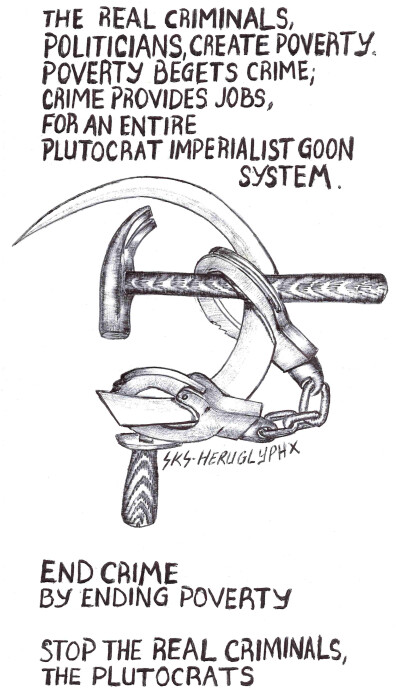
Gov. Abbot Pledges to Eliminate Rapists while Porn is Forced on TX Prisoners
While Governor Abbot has enacted a full on assault on women’s rights here in Texas, I heard him defend his decision to not even allow young rape victims to have an abortion. His reasoning was that he has plans to end rape in the great state of Texas (and I have plans to win the powerball lottery). This is almost as good news as was President Nixon announcing that he was, “Not a Crook”, or George H.W. Bush promising, “No new taxes.” But what would you expect from a guy who cannot manage to keep the electric on in a state that makes its fortunes in the energy business?
So it should surprise no one to know that Gov. Abbot’s Texas Department of Criminal Justice(TDCJ) has enacted extremely stringent mail room policies (BP-3.91), which has prisoners and their family members up in arms! (see: Texas Censorship Rule (BP-3.91) Being Revised, Under Lock & Key No. 75) These restrictive policies were put in place because family members of sex offenders complained that their loved ones were not able to get the rehabilitation that they need while in prison because of all the drugs and photos of women in their underwear that all of the other prisoners possess. What does TDCJ do? They pass a rule that not only prevents sexually explicit photos from entering this prison it also does not allow any crayon, marker, colored paper, or greeting cards and many books and magazines are denied.
I myself had my Men’s Health and National Geographic magazines denied for “sexually explicit content,” and just today I was denied the opportunity to even read a letter from my aging, almost 80-year-old mother because it was written on colored paper. I was also recently denied a drawing, from a church member’s son for the same exact reason and he is only 7.
TDCJ thinks they can stop drugs and sexually explicit content from entering into prisons by trampling all over the First Amendment, but the sad fact of the matter is that outlawing and strict policing laws cannot and will not ever stop people from doing what they want to do. It hasn’t worked with the drug nor anti-sodomy laws and it darn sure won’t work inside of TDCJ while they have low-paid, over-worked, understaffed employees looking to make a buck.
Well, Governor, if you’re not too busy stalking abortion clinics or sifting through citizen’s personal mail, you might want to check out what all of those locked up sex offenders and gang bangers are doing here. Since you don’t feel it profitable to sufficiently staff your prisons so that prisoners have healthy activities like outside rec and mental health support groups to engage their minds, you leave them to lounge around in their rubber sandals all day, soaking up the wonderful air conditioning, selling their psych meds, smoking K2, tobacco and meth and snorting and overdosing on oxycontin, suboxone, percocet and alcohol while they eat cheese puffs and have guards scroll through the seemingly endless selection of partial and full nudity labeled shows on the On-demand cable TVs.
The really tough thing for Gov. Abbot and the unit Wardens is that it is against the rules for prisoners to operate or even touch the remote controls. So either their officers are not following the rules or they themselves are choosing to force this kind of programming on a captive audience. This is exactly why they don’t allow prayers to be read over school intercoms any more, because you cannot avoid hearing it even if you want to and believe me, there are some things you just cannot un-see or un-hear.
Here there is no escaping second-hand smoke, nor the scorn of porn, no matter how many mothers’ letters the mail room denies.
Wiawimawo of MIM(Prisons) adds: We’ve been pointing out the false logic in recent waves of censorship and digitizing of mail across this country, with evidence that drugs in prisons have not been reduced, which was the stated aim of these policies.(1) Now with BP-3.91 aiming to eliminate material that might prevent sex offenders from recovering we find out that the policy is used to censor educational material, holiday cards and letters from children while prisoners are watching porn on TV all day whether they want to be or not.
We like the connection this comrade makes to Abbot’s great plan to ban abortion and eliminate rapists. Below we print another story about gender and rape in prisons from a comrade who has been studying MIM’s writings on gender. This adds to the critique of Abbot by pointing out how all sex is rape under patriarchy, as well as pointing to the intimate relation between porn and profits that prevent rape from being eliminated under capitalism. The tying of pleasure and power to motivate the consumer class to keep capital circulating in the economy is so important to the bourgeoisie that rape has become an unavoidable feature of capitalism.
A California prisoner writes: After reading the MC5 paper Clarity on what gender is, I was a bit confused about MacKinnon’s line that all sex is rape. It took me a few days to comprehend what she was trying to say. First if something does not make sense, check your premise.
Her statement didn’t add up because my premise was that she was making a statement, when in reality her line is a metaphor of patriarchy (oppressive culture where men dominate). I recall feminists using a similar line in South America, “You are the rapist.” And I believe this is what MacKinnon was trying to say. This is a metaphor of the dominance of men in gender oppression.
It really became clear for me at “pill call.” I was waiting in line for my pills and on the other side of the fence some other prisoners were waiting in line for pills. One group was nuts to butts and a second the same. Both groups were standing 6 feet away from a sex offender as if he had some sort of contagious leprosy.
It is at this point a nurse walks by and the first group starts murmuring obscene comments amongst each other about her body. The second group started panting like a bunch of wild dogs and talking among themselves about the girl’s body. Meanwhile the isolated sex offender said nothing.
Everyone in line had something disgusting to say about the nurse except for the one man that everyone else is pretending to be better than. There is no doubt in my mind that every single one of those disgusting animals would be a rapist if it was just them and her in a room alone, thus giving merit to the feminist line “you are the rapist” and clarifying MacKinnon’s line “all sex is rape.”
Those men that so quickly became something less at the mere sight of a female are taught by an endless barrage of television commercials exploiting a woman’s beauty, that women are objects. Every time anyone wants to sell something in this capitalist culture the object is next to a beautiful woman, thus the object for sale is automatically associated with a woman as an object, similar to hypnotism.
Some of the men were probably only acting like wild animals just to fit in because they think that objectifying the woman is what is expected of them. However, that is somehow worse than the one who really is only seeing an object, because a mindless animal who can’t think for himself is always worse than a self-thinking man of reason.
From a woman’s perspective she truly must feel oppressed living in a world where all men act like disgusting animals. Truly she must feel like “all sex is rape” because all men act like rapists. As a reaction, women are past the point of tolerance and a lot of men are now doing serious time in prison for nothing more than what the capitalist system teaches them to do. For the liberation of women it becomes necessary for men to become oppressed, especially so here in Amerika where the answer to every conflict is a life sentence in prison.
Revolution from my perspective is never accomplished by half measures of compromise (small talk, legislation, reform, etc). Rights are never granted, they are won.
We all, female and male, must unite to win our right to be treated as a human being. We all must fight for our liberation. The monster that is the U.S. government cannot be reasoned with, cannot be reformed, every time we win 1 step, we lose 2. It is now all or nothing. For all of us that are oppressed the time is now. We must rise not for ourselves, but for a better future.
final comments by Wiawimawo: This comrade’s assumption that any of these men would have raped the womyn if given a chance contradicts eir assumption that some are just following along in the act. But this reinforces the point that rape is a systematic thing, that even if each of those men would not have raped that womyn if they found her alone, they participated in the culture of rape.
We’d also point out that many females do not “feel like all sex is rape”, and we argue that this is the case in the oppressor nations because of the gender privilege females have here they are gender oppressors, or men.
If Gov. Abbot’s big plan for ending rape is to lock up rapists, this will fail on two accounts. One is that Amerikan prisons do not reform or rehabilitate, which is why we are building our own independent institutions of the oppressed. But more importantly, rape is not about individual choices and behaviors, just like all crimes that are epidemic in imperialist society. Our culture creates rapists every day. It is only by transforming the relations between humyn beings that we can eliminate rape. And as mentioned above, capitalism is so dependent on selling sex, it is only through overthrowing capitalism that we can begin to make real strides in this transformation.





 Alabama
Alabama
 Alaska
Alaska
 Arizona
Arizona
 Arkansas
Arkansas
 Army Post
Army Post
 California
California
 Colorado
Colorado
 Connecticut
Connecticut
 Delaware
Delaware
 District of Columbia
District of Columbia
 Federal
Federal
 Florida
Florida
 Georgia
Georgia
 Guam
Guam
 Hawaii
Hawaii
 Idaho
Idaho
 Illinois
Illinois
 Indiana
Indiana
 Iowa
Iowa
 Kansas
Kansas
 Kentucky
Kentucky
 Louisiana
Louisiana
 Maine
Maine
 Maryland
Maryland
 Massachusetts
Massachusetts
 Michigan
Michigan
 Minnesota
Minnesota
 Mississippi
Mississippi
 Missouri
Missouri
 Montana
Montana
 Nebraska
Nebraska
 Nevada
Nevada
 New Hampshire
New Hampshire
 New Jersey
New Jersey
 New Mexico
New Mexico
 New York
New York
 North Carolina
North Carolina
 North Dakota
North Dakota
 Ohio
Ohio
 Oklahoma
Oklahoma
 Oregon
Oregon
 Pennsylvania
Pennsylvania
 Puerto Rico
Puerto Rico
 Rhode Island
Rhode Island
 South Carolina
South Carolina
 South Dakota
South Dakota
 Tennessee
Tennessee
 Texas
Texas
 Utah
Utah
 Vermont
Vermont
 Virginia
Virginia
 Washington
Washington
 West Virginia
West Virginia
 Wisconsin
Wisconsin
 Wyoming
Wyoming






